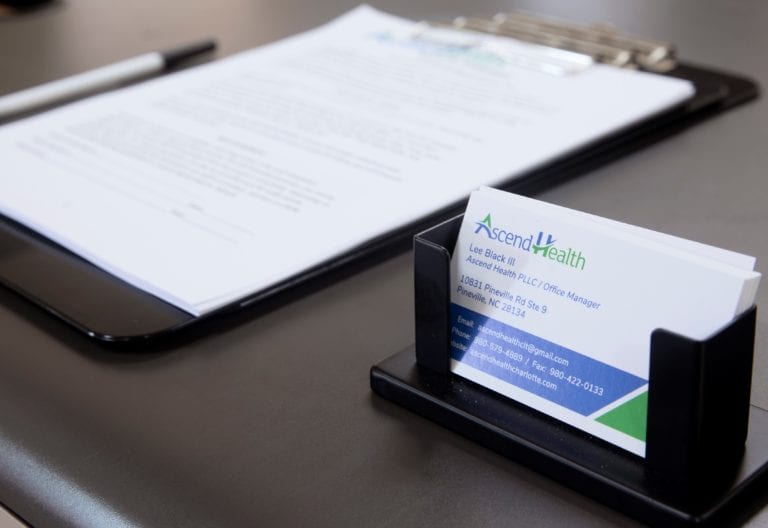If you’re searching for a suboxone program that accepts Aetna, this comprehensive guide will walk you through each step to access medication-assisted treatment. Combining buprenorphine and naloxone, Suboxone provides an evidence-based approach to managing opioid use disorder, helping you reduce cravings and withdrawal symptoms. Whether you prefer in-person clinics or telehealth options, understanding your Aetna benefits and navigating the enrollment process will ensure you receive the care you need.
Understand Suboxone treatment
What is Suboxone
Suboxone is a brand-name prescription medication containing buprenorphine, a partial opioid agonist, and naloxone, an opioid antagonist that helps manage opioid cravings and reduce withdrawal symptoms [1]. By attaching to opioid receptors in the brain, buprenorphine alleviates withdrawal without producing the intense high of full opioid agonists, while naloxone discourages misuse by precipitating withdrawal if the medication is injected or snorted [1]. Suboxone is recommended by the CDC, SAMHSA, and WHO as an effective treatment for opioid use disorder [2].
How Suboxone works
Buprenorphine binds tightly to mu-opioid receptors, stabilizing brain chemistry and preventing cravings and withdrawal. Because it is only a partial agonist, it produces a ceiling effect that limits euphoria and respiratory depression. Naloxone remains inactive when Suboxone is taken orally as prescribed, but it triggers withdrawal symptoms if someone attempts to misuse the film or tablet by injection or snorting. This dual mechanism helps you remain focused on recovery rather than on obtaining or using illicit opioids.
Dosage and duration
Your clinician will determine an initial Suboxone dose based on your opioid tolerance and withdrawal status. Buprenorphine’s half-life ranges from 24 to 42 hours, so the medication stays in your system for several days, allowing once-daily or every-other-day dosing [2]. Over time, your dose may be adjusted to maintain stability, minimize side effects, and support long-term recovery. Regular follow-up appointments ensure dosing remains aligned with your progress and goals.
Check Aetna coverage
Aetna MAT benefits
Aetna health plans typically cover Medication-Assisted Treatment (MAT) for opioid use disorder on par with medical and surgical benefits, as required by the Mental Health Parity and Addiction Equity Act and the Affordable Care Act [3]. Coverage includes Suboxone, counseling, case management, and other supportive services. Whether you have a commercial, Medicare, or Medicaid plan, you can access evidence-based therapies without significant out-of-pocket barriers.
Coverage details and limits
In 2023, brand-name Suboxone was removed from many Aetna formularies, but generic versions remain covered across all plans. Depending on your policy, you may need prior authorization for certain prescriptions, especially under Medicare or Medicaid. Co-pays, deductibles, and visit limits vary by plan. For specifics, review your Evidence of Coverage or call Aetna member services. You can also find a suboxone treatment program covered by insurance that outlines in-network options.
Recent legislative changes
Recent updates to federal regulations have expanded access to buprenorphine by allowing any DEA-registered practitioner with Schedule III authority to prescribe Suboxone without a special waiver as of 2023 [4]. This change increases the number of eligible providers, making it easier for you to find care through Aetna-contracted clinicians.
Find participating programs
Use Aetna provider locator
Start by logging into your Aetna member portal and searching the MAT provider directory. If you prefer guided support, Ascend Health’s licensed clinicians offer an insurance verified mat program that confirms your Aetna benefits and connects you to in-network Suboxone treatment providers. This streamlined process saves time and ensures you receive care covered by your plan.
Ask for in-network clinics
When contacting local treatment centers, verify that they accept Aetna and offer Suboxone or buprenorphine maintenance therapy. Ask about hidden fees, co-pays, and whether they provide confidential outpatient mat services. You can also search for an outpatient suboxone treatment program in your area to compare options.
Consider telehealth options
If travel or scheduling is a concern, explore telehealth Suboxone clinic appointments. Many Aetna-in-network providers, including Ascend Health, offer telehealth mat appointment scheduling for discreet, convenient access. Telehealth lets you meet with clinicians from home, maintain privacy, and reduce time off work or family commitments.
Prepare your enrollment
Gather required documents
Before your first appointment, assemble the following:
- Aetna insurance card and member ID
- Valid photo ID (driver’s license or passport)
- List of current medications and dosages
- Summary of your medical and mental health history
- Records of previous substance use treatment, if any
Having these documents ready speeds up insurance verification and intake.
Verify insurance eligibility
Call Aetna member services or use the online portal to confirm your MAT benefits, including co-pays, deductibles, and prior authorization requirements. If you need additional support, check programs like insurance covered outpatient mat or ask Ascend Health’s team to verify coverage on your behalf. Clear understanding of benefits prevents unexpected costs and delays.
Start treatment process
Schedule a same-day appointment
If you’re ready to begin immediately, inquire about a same day suboxone appointment. Ascend Health and many other clinics reserve slots for urgent intakes, allowing you to start medication and counseling without waiting weeks for an opening.
Attend initial assessment
During your first visit, a licensed clinician will review your medical history, confirm opioid withdrawal onset, and determine the appropriate Suboxone dose. You may need to abstain from opioids for 12 to 24 hours before dosing so early withdrawal signs are present [1]. This assessment ensures safe induction onto Suboxone and minimizes risk of precipitated withdrawal.
Maintain your treatment
Follow up appointments
Once treatment begins, schedule regular follow-ups—often weekly or biweekly—so your clinician can monitor progress, adjust dosing, and address side effects. Tracking your symptoms and any cravings helps optimize your maintenance plan. Some programs offer group check-ins or nursing visits to supplement clinician oversight.
Combine with counseling
Medication works best when paired with behavioral therapies. Enroll in a buprenorphine addiction treatment program that includes individual counseling, group therapy, or family sessions. Evidence shows combining MAT with counseling significantly increases long-term sobriety [4].
Optimize your recovery
Access support services
Recovery involves more than medication. Aetna’s 360 Behavioral Health program covers case management, peer support, housing assistance, and vocational services [5]. Reach out to your care coordinator or Ascend Health’s support staff to leverage these resources and build a stable foundation for lasting change.
Use contingency management
Contingency management programs reward adherence to treatment plans—such as attending appointments or negative drug screens—with incentives. Ask your provider if this evidence-based approach is available through your Aetna plan. Digital platforms and support groups can also offer milestone-based encouragement to keep you motivated.
Taking these steps will help you navigate the process of finding a Suboxone program that accepts Aetna and set you on a path toward sustained recovery. If you’re ready to begin, contact Ascend Health today for confidential, same-day or telehealth access to licensed clinicians, a verified insurance process, and comprehensive support tailored to your needs. Your journey to stability and wellness starts here.



